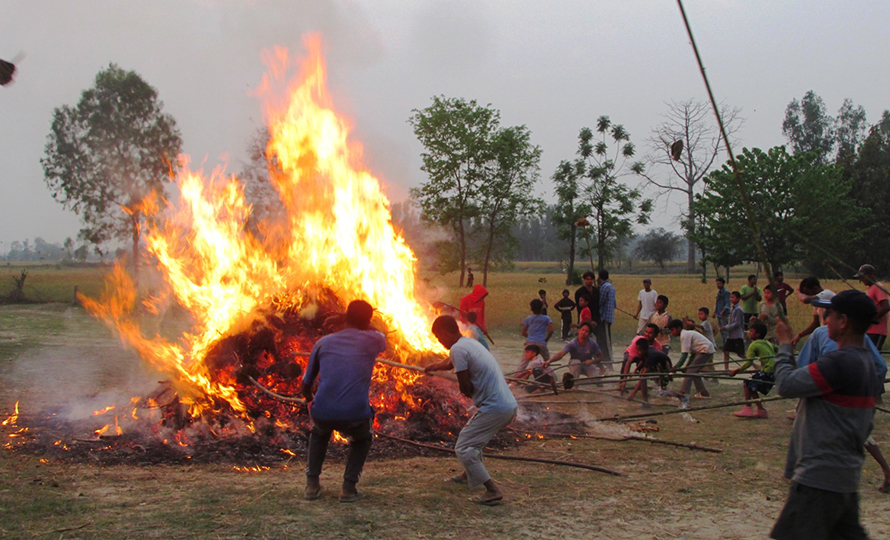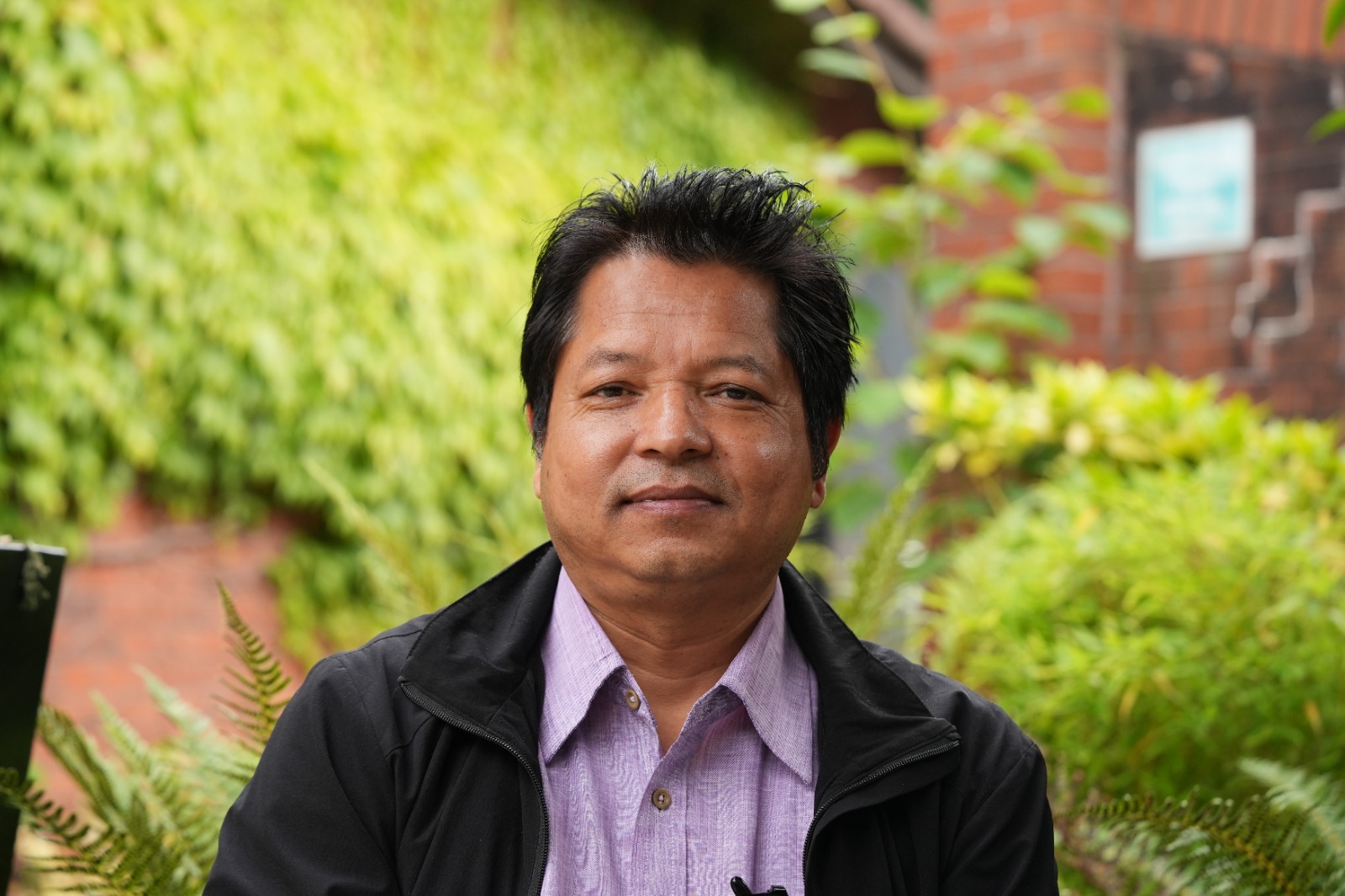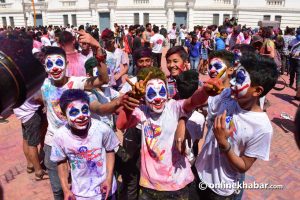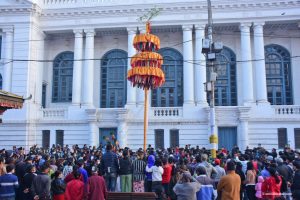
While Holi, the festival of colours, is celebrated across Nepal’s plains and hills, the Rana Tharu people of Far-West Province’s Kailali and Kanchanpur districts celebrate a unique version called Hori (Holi). This tradition extends across the border into India, observed in the Udham Singh Nagar district of Uttarakhand and the Kheri district of Uttar Pradesh.
Hori (Holi) holds immense significance for the Rana Tharu community as their grandest festival. Its uniqueness lies in its extended duration – over 38 days – and it unfolds in distinct phases, starting with Zinda Hori, which translates to alive Hori.
Zinda Hori
Zinda Hori signifies the preparation for Holika’s cremation on Fagu Purnima, the full moon day of the Nepali calendar of Falgun (from mid-February to mid-March). Lasting a month, it begins on Magh Purnima (full moon of Magh) and culminates with the burning of Holika, called Hori Doongan in the Rana dialect, on Phagu Purnima.
The celebrations begin with establishing a symbolic representation of Holika – a mannequin – on the village outskirts, usually near the Bhuiya, a shrine dedicated to the clan goddess representing Mother Earth. This ritual, believed to invite the spirit of Holi from the holy site of Mathura in India, involves a special ceremony using offerings collected from each household. The rhythmic beats of the dhol drums fill the air, followed by lively dances and traditional Hori songs, setting the tone for month-long festivities.
Every night, the celebration moves to a different house within the community. Here, people gather to collect cow dung, mustard hay, and firewood, essential elements for cremating Hori on the full moon of Falgun. The evening gatherings are more casual, with participants dressed in everyday attire. The host family offers jaggery, a sweet treat, shared among the dancers (hurkhilla) and the audience.
Mari Hori

Mari Hori, meaning dead Hori, marks the period after Holika’s cremation, signifying her symbolic death. One of the most significant days falls on Tika Day when the established Holika effigy is ceremonially cremated.
Mari Hori celebrations begin after Falgun Purnima and continue for eight days. This phase sees participants decked in their finest traditional attire, with festivities extending well into the night. The eighth day, the grand finale, is known as Khakdehara.
Khakdehara
Khakdehara signifies the symbolic farewell to Holika and her return journey to Mathura until the next year. The centrepiece of this ritual is a mud pot called khakdehara (ghalla in Rana dialect) filled with symbolic items like kajal (eye kohl), sindoor (vermillion) and mud marbles woven into wooden picks. On the eighth day, the khakdehara is placed on the village’s southern outskirts.
A designated village priest leads a step-by-step ceremony, culminating in the ceremonial breaking of the pot with a stick. As the pot shatters, participants call upon Holika to carry away the village’s evils and diseases, leaving behind prosperity for the coming year. This marks the final farewell to Hori for the year. The tradition dictates that participants avoid looking back while returning home from the Khakdehara ceremony. Upon reaching the village, the celebrations conclude with a playful water fight – a final burst of revelry before Hori departs.
The Rana Tharu community, like all cultures, is subject to the inevitable winds of change. Traditional clothing and songs are facing challenges in the face of modernity. However, Hori celebrations have helped rekindle the younger generation’s interest in their cultural heritage. Their growing affinity towards traditional attire during the festival highlights a renewed awareness of their unique cultural identity and language.
























